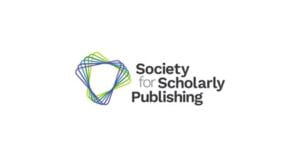In September, NYU Libraries and the Embedding Team hosted a hybrid on-site/on-line gathering for partners that focused on two areas of inquiry:
-
- the embedding experience
- shared challenges to preservability of complex digital publications
Editorial and production staff from six university presses, developers from three publishing platforms, several special guests, and the embedding team shared their perspectives, expertise, and insights over the course of two days. The participatory format of the gathering was modeled on the embedding process with time for everyone to contribute individually, in small groups, and together as a full group. A series of questions for each section of the agenda were shared ahead of time via a Miro board that served as the virtual place for participants to share information as well as a guide for remote participants.
The first day was devoted to the embedding process itself. Press partners described their publications and why they were selected for inclusion in this research. Platform partners described how they approached preservation via features, functions, and overarching service philosophy. Embedding team members highlighted one risk to preservability for each of the candidate publications alongside the guideline recommendations for how to address it. The full group discussed the viability of those suggested approaches and how easy/difficult they might be to implement. The group explored lingering questions that the process had raised as well as opportunities that lie ahead. Throughout the course of the day the group discussed six publications and three publishing platforms.
We asked partners to consider some of the shared challenges that have emerged during the course of our research to help us understand how we might address them in terms of project outcomes. These discussions began in small groups and ended with report outs to the full group where questions and further conversation ensued. In all, partners discussed four shared challenges to enhancing preservability of complex digital publications and provided concrete feedback to the embedding team.
The challenges that were discussed are listed below.
-
- Only a subset of guidelines are likely to apply to a given platform and they need to be adapted to fit the platform. What are some ways the guidelines could be activated to best support your work?
- It’s sometimes unclear whose responsibility it is to think about preservation. What roles seem appropriate to address preservability of publications? What can we do to reach and educate those who are likely to do this work?
- Concepts are not universally understood when it comes to preservation. This makes it difficult for publishers to articulate what is in scope for preservation at the publication level and communicate their needs to their platforms. What would help publishers achieve a shared understanding of baseline preservation vocabulary, philosophy, and concepts so that they are in a position to establish scope at the Press level and publication level, as well as communicate their needs in a consistent and clear way to their platform partners?
- Captions are more likely to be created for images than they are for enhanced features such as video, audio, GIS data, etc. These features are at a high risk of loss, leaving a hole with no description. What are the obstacles you face in producing captions for all embedded material? What would help you address those obstacles?
The feedback we received from partners will inform the project deliverables to be published in 2024.

